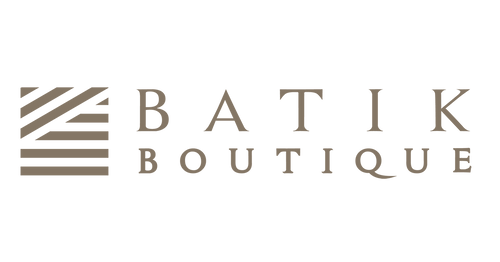How to Tie & Dye

As we continue to live in this constant season of #stayathome and #wfh, there is a growing trend for DIY craft and activity kits to keep us entertained and creative in this mundane time of living in what feels like the twilight zone. Enter in Batik Boutique’s NEWEST DIY Kit - Shibori Face Masks.
Shibori is an ancient Japanese art form and hand-dyeing technique. The beauty of Shibori is that there are countless ways to create the effect; you can tie, fold and manipulate the fabric in any way you’d like, and the possibilities of patterns you can create are infinite.
The kit comes with all the tools and materials you need to get Shibori happy from the comfort of your home to make 3 different style 3 layer reusable face masks. There is even a QR code included with a video tutorial from a textile designer to fail-proof the process.
If you’re ready to jump right in, here are three steps to get started:
Step 1: Prepare materials

To get started, you can either create your own plant dyes or purchase cold reactive dyes online. You’ll also need to get the fabric or item you’d like to dye, gloves, rubber bands and popsicle sticks.
Our kit comes with everything you need to get started; this includes 3 pieces of practice fabric,1 pair of gloves, 20 rubber bands, 4 popsicle sticks, 3 low-impact dyes with nozzle bottles and 3 three-ply, white reusable face masks.
Minimise the mess from the dyeing session by wearing an apron and laying out a plastic surface cover or large trash bag to cover your working area. You can also set aside a resealable plastic bag or plastic wrap to keep your project damp while it sets and a dish rack to help prevent the project from sitting in pooled dye.
Step 2: Tie or Clamp


The second step is where creativity kicks in as the way in which you tie, fold or bind your fabric will determine your Shibori pattern.
Stripes – be it horizontal or vertical – are a basic pattern for beginners. To achieve this pattern, lay out your fabric on your working space and begin folding pleats either vertically or horizontally. Next, use rubber bands or popsicle sticks to secure your fabric; you can space the bands far apart for wider stripes or closer together for thin stripes.
If stripes aren’t your style, find inspiration in the video tutorial that comes with our kit. This tutorial covers three different patterns that are often featured in our collection of shibori apparel and accessories.
Step 3: Dye


Ahead of the dyeing process, some powdered dyes may have to be mixed. Our kit comes with three dye powders; all you have to do is remove the nozzle, add tap water, place the cap back on and shake each bottle until the powder dissolves.
Here’s a quick tip: if you’d like white sections on your fabric, you should soak your fabric in water just before dyeing. Next, put on your gloves, place your project on your working area or rack and apply your dyes. There's no wrong way to tie and dye – so experiment with colours and express yourself.
Once the dyeing is complete, place your dyed item in a resealable plastic bag or plastic wrap to keep the item damp while the dye dries. Leave your item to dry overnight, or for 6 - 8 hours. Once dry, remove the rubber bands or popsicle sticks, rinse the item or machine wash to remove excess dye, and hang to dry. Your Shibori piece is ready!


While shibori and tie-dye pieces are currently very much on trend, the process behind the art is also very meditative. Folding, tying and dyeing without knowing what to expect when you unwrap the dyed piece makes this a low pressure art form that consistently yields beautiful results – the perfect home activity for those of us in lockdown.
So gather a group virtually and learn shibori techniques to create your own three-ply face masks with our new DIY shibori masks set today.
Not one to DIY? Check out our Shibori Eco-dyed masks and loungewear and pick up something for you or a friend.


2 comments
-
Hadiza Aliyu on
I want to learn how to tie and die, and block print.when is the best time thank you?



Thank you for sharing your blog.